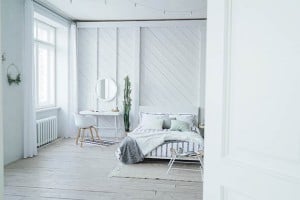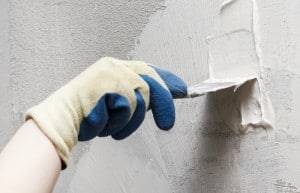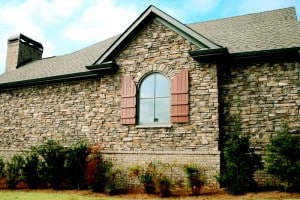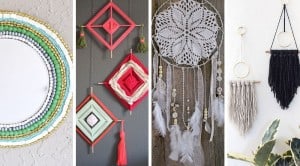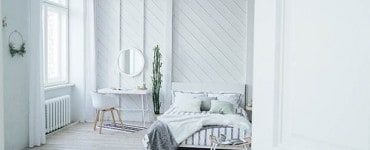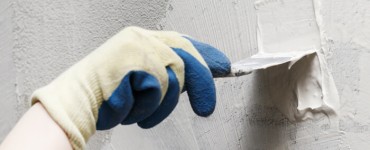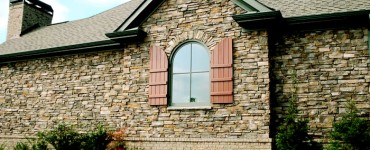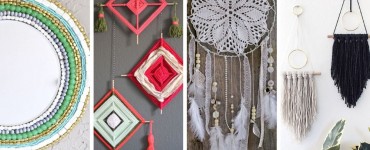One often overlooked aspect that can transform the look and feel of your living spaces is wall textures. These artistic finishes have the power to add depth, character, and a unique touch to any surface, breathing life into an otherwise plain backdrop.
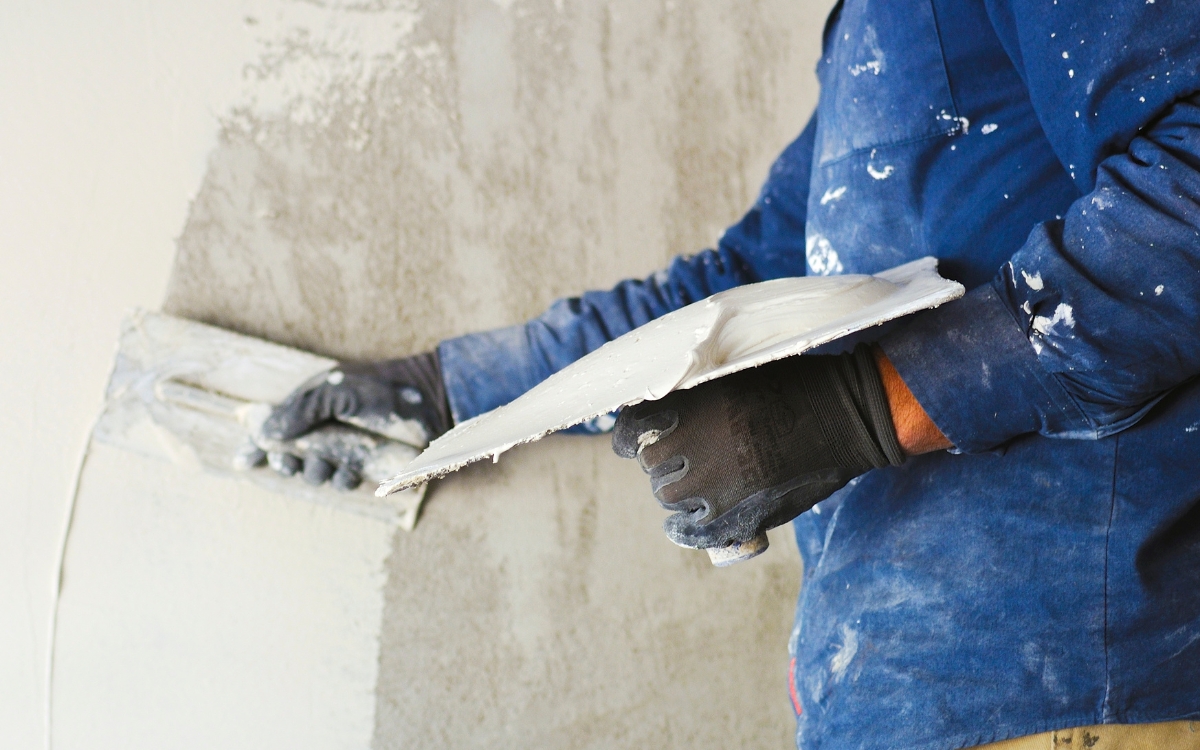
In this blog post, we will delve into the diverse realm of wall textures, exploring various techniques and styles that can be employed to elevate your home decor. Whether you’re aiming for a sleek, modern finish or a rustic, traditional charm, understanding different types of wall textures will empower you to make informed decisions that align with your interior design vision.
Smooth Wall Finish
A smooth wall finish is a classic and timeless option that exudes elegance and sophistication in interior design. As the name suggests, this texture creates a seamless and sleek surface, free from any visible bumps or imperfections. It serves as a versatile backdrop for various decor styles and allows other elements, such as furniture and artwork, to take center stage.
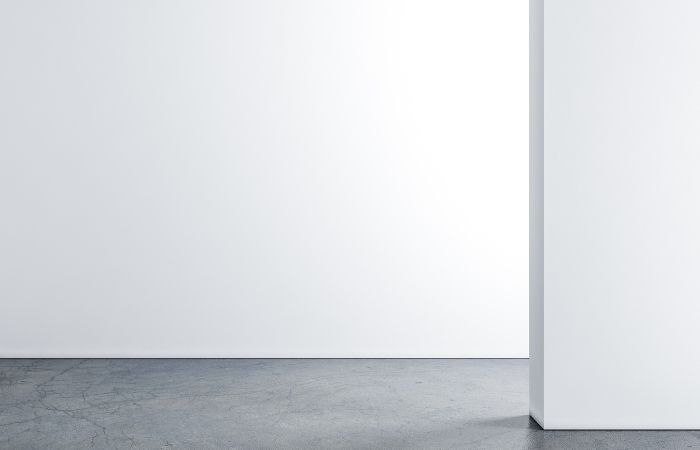
Benefits of a Smooth Wall Finish
Achieving a smooth wall finish comes with numerous advantages, making it a popular choice for homeowners and designers alike. One of the main benefits is its ability to reflect light uniformly, creating a sense of openness and spaciousness within a room. This makes it particularly ideal for smaller spaces, where maximizing light is crucial to avoid a cramped feeling.
Moreover, smooth walls are easy to clean and maintain, as there are no recesses or crevices for dust to accumulate. A simple wipe-down with a damp cloth is often sufficient to keep them looking pristine, making it a practical choice for high-traffic areas or spaces prone to splashes and stains, such as kitchens and bathrooms.
Techniques for Achieving a Smooth Wall Finish
Achieving a flawlessly smooth wall requires proper preparation and application techniques. Before beginning the process, it’s essential to inspect the wall surface for any existing imperfections or damages. Patching up holes and sanding down rough spots will ensure a smooth foundation for the final texture.
The most common method to achieve a smooth wall finish is by using joint compound or drywall mud. The compound is applied to the wall in thin layers, and each layer is sanded down until the desired smoothness is achieved. This process may require multiple applications and sanding rounds to ensure a perfectly even surface.
Skip Trowel Texture
The skip trowel texture is a popular wall finish that adds a subtle and artistic dimension to interior spaces. This technique creates a textured surface characterized by its irregular patterns, reminiscent of skip trowel patterns found in masonry work. The result is a visually appealing and tactile texture that can complement a wide range of decor styles, from rustic and Mediterranean to contemporary and bohemian.
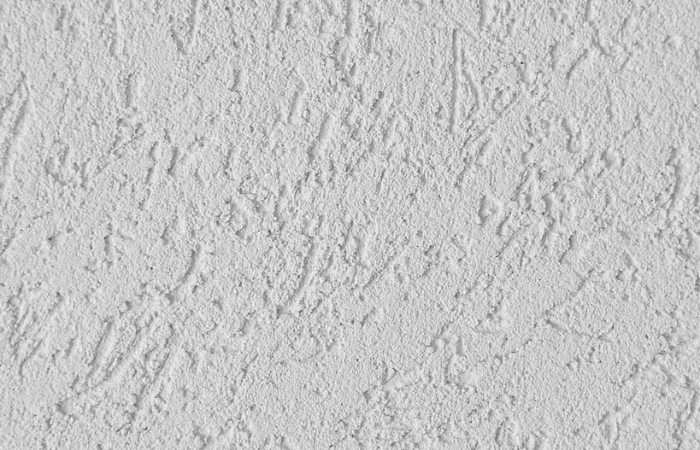
Creating the Skip Trowel Texture
To achieve the skip trowel texture, a mixture of joint compound or drywall mud is applied to the wall using a trowel. The trowel is used in a skipping motion, creating peaks and valleys in the compound as it is spread across the surface. The irregularity in the pattern is what gives this texture its unique charm and character.
Various Skip Trowel Patterns
The skip trowel texture allows for creativity and flexibility, and there are several patterns you can experiment with to achieve different effects. Some common skip trowel patterns include “half moon,” “stomp knockdown,” and “slap brush,” each creating distinctive textures with their own visual appeal.
Pros of Skip Trowel Texture
The skip trowel texture offers several advantages that make it a sought-after choice for homeowners and designers:
- Hide Imperfections: The irregular patterns of the skip trowel texture can help conceal minor imperfections or unevenness on the wall surface, providing a visually pleasing finish.
- Unique Aesthetic: The artistic and handcrafted nature of the skip trowel texture adds a touch of uniqueness to a room, making it stand out from more common smooth or textured finishes.
- Versatile Look: Depending on the application technique and patterns used, the skip trowel texture can be adapted to suit various decor styles, from traditional to contemporary.
- Hides Settling Cracks: In older homes where settling cracks might be present, the skip trowel texture can help mask these imperfections, reducing the need for extensive repairs.
Cons of Skip Trowel Texture
While the skip trowel texture has its merits, there are also some considerations to keep in mind:
- Time-Consuming Process: Achieving the skip trowel texture requires skill and patience, as it involves multiple layers and the careful application of the joint compound.
- Hard to Match: If a repair is needed in the future, matching the skip trowel texture to the existing finish can be challenging, making it important to keep spare joint compound for touch-ups.
Orange Peel Texture
The orange peel texture is a wall finishing technique that imparts a subtle yet distinctive texture to interior walls. As the name suggests, the texture resembles the surface of an orange peel, with a slightly bumpy and dimpled appearance. This textured finish is a popular choice for those seeking to add depth and visual interest to their walls without the pronounced patterns of other textures.
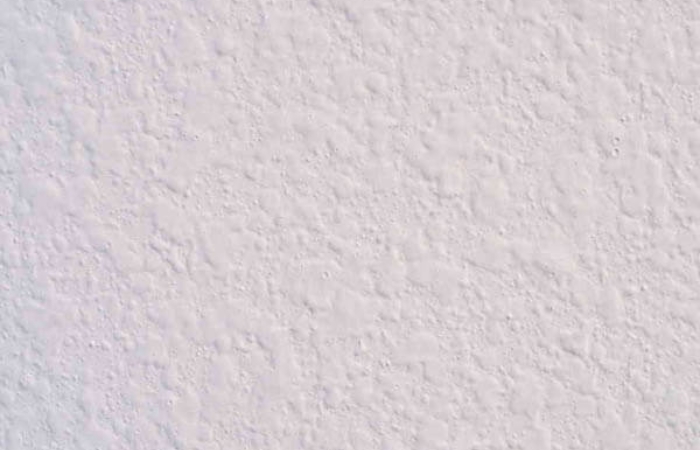
Applying the Orange Peel Texture
The process of creating an orange peel texture involves spraying a mixture of drywall joint compound and water onto the wall surface. The compound is thinned to achieve the desired consistency and is then sprayed using a texture hopper gun or a paint sprayer with a special nozzle designed for this purpose. As the compound dries, it forms the characteristic dimpled texture, resembling the skin of an orange.
Variations in Orange Peel Texture
The orange peel texture can be adjusted to achieve different levels of coarseness or smoothness. The size of the texture particles in the joint compound mixture and the spraying technique used can impact the final result. A fine orange peel texture creates a more subtle finish with smaller dimples, while a heavier application yields a more pronounced and textured surface.
Advantages of Orange Peel Texture
The orange peel texture offers several advantages, making it a popular choice among homeowners and contractors:
- Hides Imperfections: Like other textured finishes, the orange peel texture can effectively hide minor imperfections and unevenness on the wall surface, providing a more forgiving finish than smooth walls.
- Easy Maintenance: The slight texture of the orange peel is easy to maintain, as it doesn’t trap dust and dirt as readily as smooth surfaces. Simple cleaning with a duster or a gentle wipe-down keeps the texture looking fresh.
- Subtle Visual Appeal: The orange peel texture adds a subtle visual appeal to walls, creating a textured backdrop that complements a variety of decor styles without overpowering other design elements.
- Camouflages Repairs: In the event of minor wall damage or repairs, the orange peel texture can help disguise patched areas, ensuring a seamless and cohesive appearance.
Maintenance and Repair of Orange Peel Textured Walls
Maintaining an orange peel texture is relatively simple. Regular dusting and occasional gentle cleaning are typically sufficient to keep the texture looking its best. In the event of more significant damage, such as holes or dents, repairing the orange peel texture can be accomplished by patching the affected area with joint compound and then blending the texture to match the existing finish.
Knockdown Texture
The knockdown texture is a popular wall finishing technique that strikes a harmonious balance between the smooth and heavily textured surfaces. It is characterized by its raised texture created using joint compound or drywall mud, followed by “knocking down” the peaks to achieve a partially flattened and mottled appearance. This technique adds depth and dimension to the walls, making it a favored choice for contemporary and transitional interior designs.
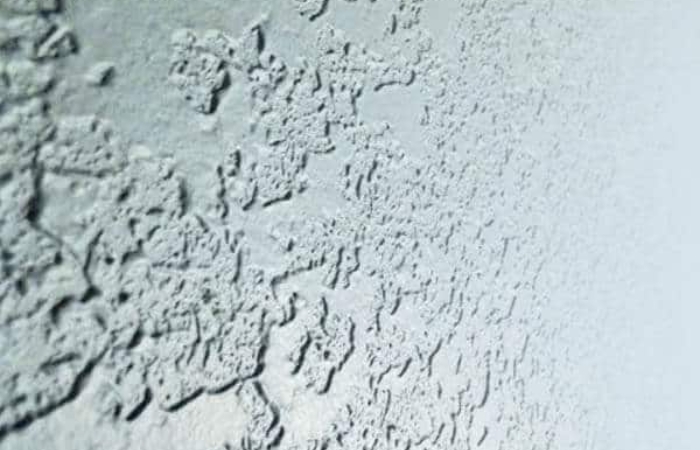
Creating the Knockdown Texture
To achieve the knockdown texture, the joint compound or drywall mud is applied to the wall using a trowel or texture sprayer, creating a raised texture with peaks and ridges. After allowing the compound to set for a short period, the peaks are then “knocked down” or flattened using a knockdown knife or trowel. This process creates the unique mottled appearance, where some texture remains while the overall surface is partially smoothed.
Types of Knockdown Texture
There are two primary types of knockdown texture: “dry” knockdown and “wet” knockdown. In dry knockdown, the joint compound is allowed to dry slightly before being knocked down, resulting in a more defined and pronounced texture. Wet knockdown, on the other hand, involves knocking down the peaks while the compound is still wet, creating a softer and more subtle texture.
Pros of Knockdown Texture
The knockdown texture offers several benefits, making it a popular choice for interior walls:
- Hide Imperfections: Like other textured finishes, the knockdown texture can effectively hide minor imperfections, such as small dents or irregularities on the wall surface.
- Versatility: The knockdown texture can be adjusted to achieve different levels of texture, from more pronounced to subtle, making it suitable for various decor styles.
- Aesthetic Appeal: The mottled appearance of the knockdown texture adds visual interest to walls, creating a dynamic backdrop that complements both modern and traditional design elements.
- Durability: The slight texture left on the walls after knocking down the peaks adds a level of durability, making it more resistant to scuffs and minor damages compared to smooth walls.
Cons of Knockdown Texture
While the knockdown texture offers many advantages, there are some considerations to bear in mind:
- Skill and Timing: Achieving the desired knockdown texture requires skill and timing, as the peaks need to be knocked down at the right moment to achieve the intended texture.
- Difficult to Repair: Repairing damaged knockdown texture can be challenging, as it may be difficult to match the original texture and achieve a seamless blend.
Popcorn Ceiling Texture
The popcorn ceiling texture, also known as acoustic or cottage cheese ceiling, was a prevalent interior design trend in the mid-20th century. This texture is characterized by its bumpy and uneven surface, resembling the texture of popcorn. While once popular for its practical and acoustic properties, the popcorn ceiling texture has become less favored in modern interior design due to its dated appearance and potential health concerns.
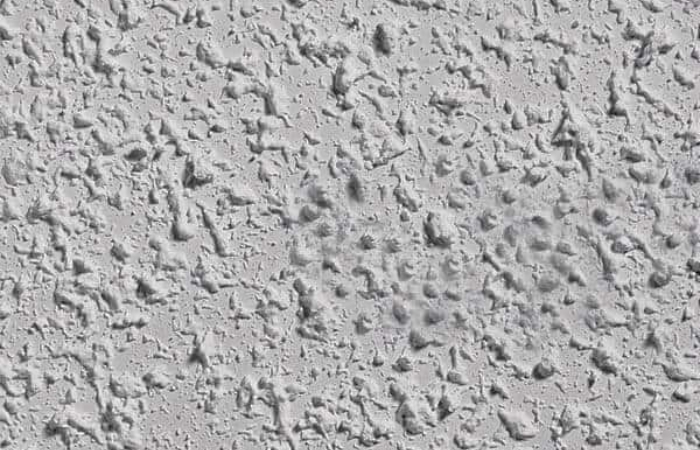
Origin and Popularity of Popcorn Ceiling Texture
The popcorn ceiling texture gained popularity in the 1950s and 1960s as a cost-effective and efficient way to hide imperfections on ceilings while also providing acoustic benefits. The texture was applied using a mixture of drywall compound, paint, and sometimes even vermiculite, sprayed or applied with a specialized texture machine. The bumpy texture helped to absorb sound and reduce echoes, making it a popular choice for residential and commercial spaces.
Health Concerns and Asbestos
One of the main reasons for the decline in popularity of popcorn ceiling texture is the use of asbestos in some earlier formulations. Asbestos was added for its fire-resistant properties but was later found to be a health hazard when disturbed, as it releases harmful fibers into the air. Asbestos-containing popcorn ceilings can be a significant concern for homeowners, especially during renovation or removal, as it requires specialized handling by professionals to ensure safety.
Removing and Updating Popcorn Ceilings
Given the potential health risks associated with asbestos-containing popcorn ceilings, it is crucial to have them tested by professionals before attempting removal. If the ceilings are asbestos-free, homeowners may choose to update the look of their popcorn ceilings or remove the texture altogether. Various methods for popcorn ceiling removal include wetting the texture and scraping it off, or covering it with a new layer of drywall or a different ceiling finish.
Modern Alternatives to Popcorn Ceiling Texture
In contemporary interior design, popcorn ceiling texture has largely fallen out of favor due to its dated appearance. Instead, homeowners and designers often opt for smoother ceiling finishes, such as a flat or textured finish, to create a more modern and streamlined look. Smooth ceilings provide a clean and versatile canvas, allowing other design elements to stand out without the distraction of a textured surface.
Slap Brush Texture
The slap brush texture is a unique and artistic wall finishing technique that creates a distinctive pattern resembling peaks and swirls. This texture is achieved by using a special brush that is “slapped” against the wet joint compound or drywall mud applied to the wall surface. The result is a visually captivating texture that adds depth and character to interior spaces, making it a popular choice for accent walls and focal points.
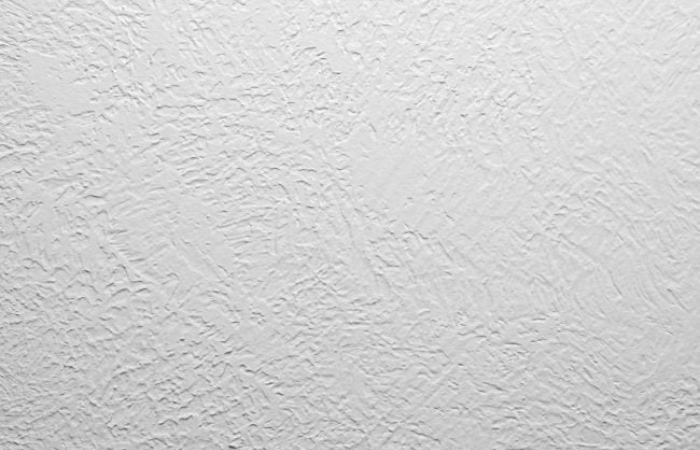
Creating the Slap Brush Texture
To achieve the slap brush texture, the joint compound or drywall mud is first applied to the wall using a trowel or texture sprayer. Once the compound is evenly spread, a large, soft-bristled brush is held at a slight angle and lightly “slapped” against the wet surface. The impact of the brush creates peaks and swirls, leaving behind a unique and textured pattern on the wall.
Tips for Achieving the Desired Effect
Creating a stunning slap brush texture requires some skill and practice. Here are some tips to achieve the desired effect:
- Consistency of Compound: Ensure that the joint compound or drywall mud has the right consistency for the slap brush technique. It should be thick enough to hold the texture but not too stiff to work with.
- Brush Selection: Use a high-quality, soft-bristled brush specifically designed for slap brush texture. The brush’s bristles and size will influence the final texture pattern.
- Light and Controlled “Slapping”: When applying the slap brush technique, use a gentle and controlled slapping motion to avoid creating overly aggressive patterns. Experiment with the brush angle and pressure to achieve the desired look.
- Practice on Sample Surface: Before attempting the technique on the actual wall, practice on a sample surface or cardboard to get a feel for the brush and the texture it creates.
Suitable Rooms and Designs for Slap Brush Texture
The slap brush texture adds a touch of artistic flair to interior spaces, making it suitable for various rooms and design styles. It works exceptionally well in spaces where you want to create a focal point or an accent wall. The texture’s unique pattern can complement both modern and traditional design aesthetics, adding an element of interest and personality to the overall decor.
Maintenance and Repairs of Slap Brush Textured Walls
Maintaining slap brush textured walls is relatively simple. Regular dusting or gentle vacuuming with a soft brush attachment can keep the texture looking fresh. In the event of minor damages, repairs can be achieved by patching the affected area with joint compound and then recreating the texture with the slap brush technique.
Venetian Plaster Texture
Venetian plaster texture is a luxurious and timeless wall finishing technique that originated in Italy. This elegant texture is crafted from a combination of slaked lime, marble dust, and pigment, meticulously applied in thin layers to create a polished and sophisticated surface. Renowned for its lustrous appearance and depth, Venetian plaster adds a touch of Old-World charm and opulence to modern interior spaces.
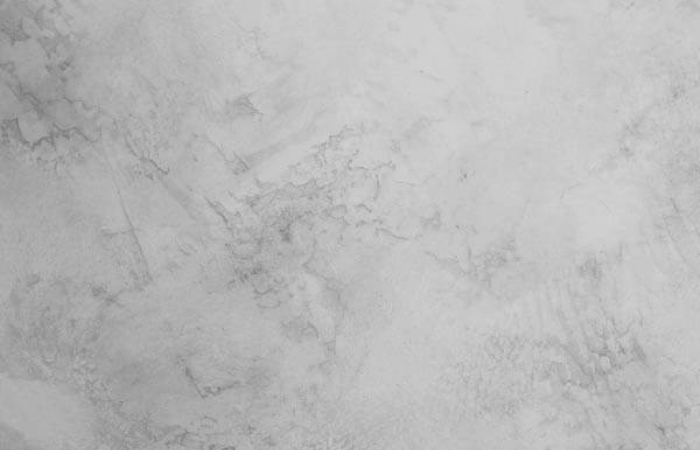
The Art of Venetian Plaster Application
Applying Venetian plaster is a meticulous process that requires skill and precision. The plaster is troweled onto the wall in thin layers, and each layer is allowed to dry before the next is applied. The artisan craftsman then uses specialized tools, such as a steel trowel or spatula, to burnish and polish the surface to a smooth and shiny finish. This technique enhances the plaster’s natural sheen, creating a luxurious and unique appearance that can’t be replicated by other wall finishes.
Advantages of Venetian Plaster Texture
Venetian plaster offers several advantages that make it a coveted choice for interior design:
- Timeless Elegance: The luxurious and polished look of Venetian plaster brings an air of sophistication and elegance to any space. It complements both traditional and contemporary design styles, adding a touch of timelessness to the decor.
- Depth and Luminosity: Venetian plaster’s multi-layered application and burnishing create depth and luminosity, giving the surface a captivating and almost three-dimensional effect.
- Customization and Color: The artisanal nature of Venetian plaster allows for custom color blending, making it possible to achieve a personalized and unique finish that perfectly complements the interior’s color scheme.
- Durability: Venetian plaster is a durable and long-lasting finish that can withstand wear and tear, making it ideal for high-traffic areas.
Care and Maintenance of Venetian Plaster Walls
While Venetian plaster is a resilient finish, proper care and maintenance are essential to preserve its beauty over time. Regular dusting or vacuuming with a soft brush attachment can help remove debris without causing damage to the delicate surface. In the case of stains or spills, it is essential to clean them promptly using a soft, damp cloth to avoid any potential damage to the plaster.
Stucco Texture
Stucco texture is a versatile and durable wall finishing technique that has been used for centuries in architecture and interior design. Originally developed from a mixture of lime, sand, and water, modern stucco now incorporates cement and acrylic additives for enhanced strength and longevity. This textured finish is renowned for its rugged charm, adding a touch of Mediterranean or Southwestern aesthetic to both interior and exterior surfaces.
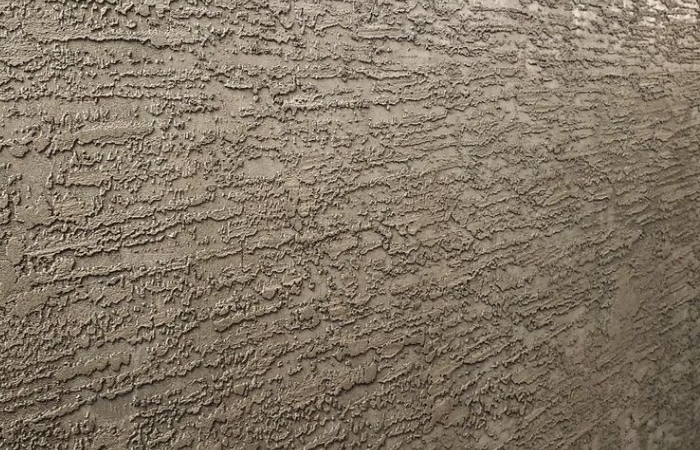
Applying Stucco Texture
The application of stucco involves layering the mixture onto a prepared surface, such as masonry or lath, using a trowel. The stucco is then worked and manipulated to achieve the desired texture, which can range from a smooth finish to a more pronounced and rustic appearance. Stucco texture can be customized by adjusting the thickness of the layers and the application technique, offering flexibility in achieving the desired look.
Different Types of Stucco Finishes
Stucco texture allows for various finishes that can complement different architectural styles and design preferences. Some common types of stucco finishes include:
- Smooth Finish: This refined and polished stucco finish provides a clean and modern look, ideal for contemporary or minimalist designs.
- Sand Finish: A sand finish incorporates fine sand particles into the stucco mixture, resulting in a textured appearance that is less rough than other types of stucco.
- Dash Finish: In a dash finish, small pebbles or aggregate are thrown onto the wet stucco surface, creating a rough and textured finish that adds character to the walls.
- Lace Finish: The lace finish involves applying stucco with a texture gun or a trowel, creating a delicate and intricate pattern resembling lace.
Pros of Stucco Texture
Stucco texture offers several advantages, making it a popular choice for various applications:
- Weather Resistance: Stucco is highly resistant to weather elements, making it suitable for both interior and exterior use in various climates.
- Durability: Stucco is a durable and long-lasting finish that can withstand wear and tear, reducing the need for frequent repairs and maintenance.
- Versatility: Stucco texture can be customized to achieve different looks, from smooth and modern to rustic and traditional, making it adaptable to different design styles.
- Fire Resistance: The addition of cement and other additives in modern stucco enhances its fire resistance, adding an extra layer of safety to buildings.
Brick Effect Texture
The brick effect texture is a creative and cost-effective wall finishing technique that imitates the appearance of real brickwork. This texture provides the charm and warmth of traditional brick walls without the need for actual masonry. It has become a popular choice for homeowners and designers who desire the rustic and industrial appeal of exposed brick, but may not have the structure or budget to support such construction.
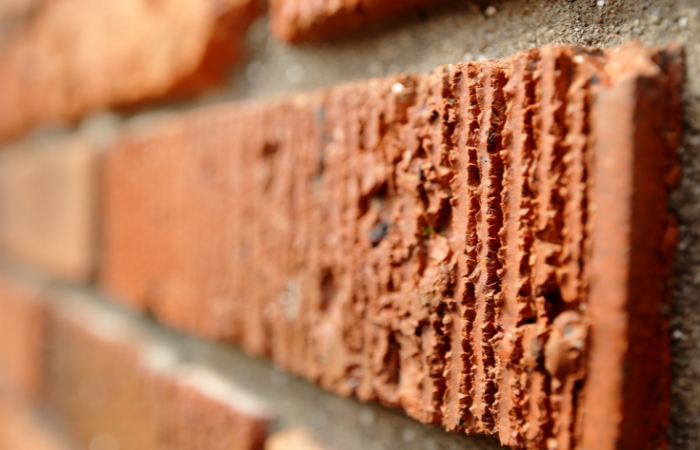
Creating the Brick Effect Texture
The brick effect texture can be achieved through various methods, including using stencils, paint, or plaster. For stenciled brick effect, a brick pattern stencil is applied to the wall, and paint is carefully brushed or sprayed over it to replicate the look of individual bricks. Alternatively, brick effect paint or specialized textured plaster can be troweled onto the wall, with additional detailing and shading added to create a more authentic appearance.
Enhancing the Brick Effect with Color and Shading
To make the brick effect texture even more convincing, adding color and shading is essential. By using different shades of paint or pigments, the texture can mimic the natural variations found in real brickwork. The addition of darker tones in the crevices and lighter shades on the raised areas creates depth and enhances the illusion of three-dimensional bricks.
Incorporating Brick Effect Texture in Design
The brick effect texture can be a versatile addition to interior spaces, offering opportunities for creativity and personalization. It can be used to create feature walls, accentuating a specific area or adding character to a room. Additionally, incorporating brick effect texture into industrial, rustic, or urban design themes can complement the overall ambiance and aesthetic.
Faux Brick Paneling and Wallpaper
For those seeking a simpler and quicker way to achieve the brick effect, faux brick paneling and wallpaper are convenient options. Faux brick panels are pre-made, lightweight, and easy to install, allowing for a quicker transformation of walls. Brick effect wallpaper offers a similar visual effect without the need for extensive preparation and application.
Maintenance and Longevity of Faux Brick Finishes
Faux brick finishes are relatively low-maintenance compared to real brickwork. Regular dusting or gentle cleaning can keep the texture looking fresh. When using paint or plaster for the brick effect, it’s essential to choose high-quality, durable products to ensure the longevity of the finish.
Wood Paneling Texture
The wood paneling texture is a classic and timeless wall finishing technique that exudes warmth, charm, and a sense of rustic elegance. This texture replicates the look of traditional wood paneling, which was historically used to line the interiors of homes and buildings. While authentic wood paneling can be costly and require extensive installation, modern alternatives, such as faux wood paneling and wallpaper, offer a more affordable and convenient way to achieve the same cozy and inviting ambiance.
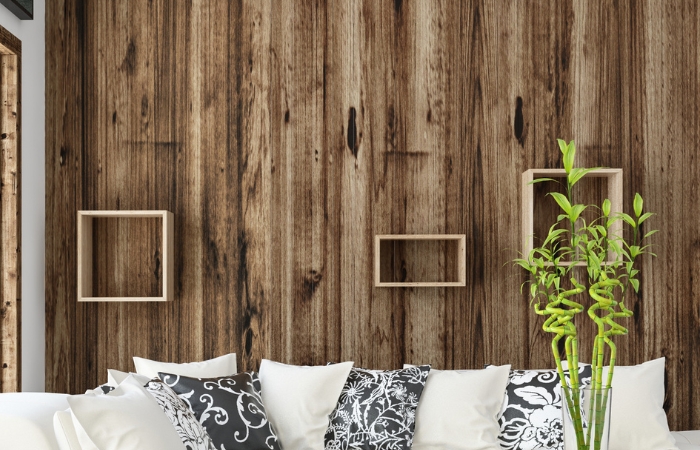
Types of Wood Paneling Texture
Wood paneling texture comes in various types and styles, offering flexibility to suit different design preferences:
- Faux Wood Paneling: Faux wood paneling is made from synthetic materials that replicate the appearance of real wood. It is available in different finishes, such as oak, pine, or reclaimed wood, providing a range of options to choose from.
- Wood Paneling Wallpaper: Wood paneling wallpaper features realistic wood grain patterns printed on wallpaper. This option allows for easy application and removal, making it an excellent choice for those who want to change the look of their walls without the permanence of actual paneling.
- Reclaimed Wood Paneling: For those who prefer the authenticity of real wood, reclaimed wood paneling uses salvaged wood from old barns, houses, or factories, giving walls a unique and weathered character.
Benefits of Wood Paneling Texture
The wood paneling texture offers several advantages, making it a sought-after choice in interior design:
- Warmth and Coziness: The natural texture and warmth of wood paneling create a cozy and inviting atmosphere in any space, making it ideal for living rooms, bedrooms, and dining areas.
- Versatility: Wood paneling can be incorporated into various design themes, from rustic and farmhouse to contemporary and Scandinavian, making it a versatile choice for interior decor.
- Conceals Imperfections: Wood paneling can be used to conceal minor imperfections or blemishes on walls, providing a clean and polished finish.
- Adds Character: Wood paneling adds character and depth to walls, creating a focal point or an accent feature that enhances the overall aesthetics of the room.
Maintaining Wood Paneling Walls
Proper maintenance of wood paneling depends on the type of material used. For faux wood paneling and wallpaper, regular dusting and gentle cleaning with a damp cloth are sufficient to keep the texture looking fresh. Reclaimed wood paneling may require occasional refinishing or treatment to maintain its appearance and durability.
Conclusion
The world of wall textures is vast and diverse, offering endless possibilities to express your creativity and style. From the smooth and subtle to the textured and bold, each technique presents its own charm, capable of transforming a room’s ambiance in delightful ways.
Remember, choosing the right wall texture is not just about aesthetics; it’s about crafting an environment that resonates with your personality and lifestyle. Whether you opt for the elegance of Venetian plaster, the warmth of faux wood paneling, or the unique charm of a slap brush texture, each choice contributes to the overall storytelling of your living spaces.


